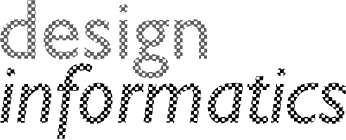Edinburgh VisHub

A Collaborative Data Visualisation Space for Interdisciplinary Research, Teaching, and Public Engagement
Request Equipment
VisHub Labs
AR + VRTouch + Screens
Print + Make
Navigation
HomeGoals
Projects
Activities
Get in touch
 |
 |
Funded by

Goals
Collaborative data analytics
researchers and data analysts typically rely solely on their desktop or laptop computers to interact with their data. These are limited in display size and interaction techniques. Our labs will support complex data analytic tasks with large screens for collaborative co-located decision making, direct touch interaction, and virtual reality, as well as exploring the possibilities of touch devices, physical tokens, and mobile devices.
Create novel research areas and support grant proposals
At the intersection of data analytics and the traditional science domains, novel display and visualization technology will lead to new research questions. The equipment in this grant will make it easy for researchers to carry out proof of concept studies in novel areas, equipping them with evidence for carrying out further research.
Establish collaborations across the domain boundaries
We aim to connect ECRs across domain boundaries and encourage them to discover common as well as novel methodologies in other domains. From our experience in cross-domain collaborations in data visualization, we strongly believe in the power and universality of data visualization methods across domain boundaries; while data in many domains is highly specific, common problems exist with respect to, e.g., large data sets, 3-dimensional data sets, as well as the visualization and exploration of complex networks, dynamic time-series, geographic data, etc. ECRs will benefit if they embrace analytical methods that have been proven helpful in other domains.
Create and evaluate novel visualization and interaction techniques for data analysis
Collaborating across the University and beyond will stimulate research on novel and improved techniques and next generation interfaces for visualizing and interacting with data. Specific questions that require novel design solutions as well as evaluation include: visualization 3-dimensional stereoscopic space, direct interaction with holograms, collaboration in virtual reality, visualization of large data sets on wall-displays, interaction with wall-displays as well as hybrid environments that combine projectors, touch-walls, augmented reality and physical visualization, eventually leading to the creation of integrated and interactive immersive workspaces for data analytics. These research questions fall into the expertise of the Centre for Design Informatics.
Teaching, demonstration and public engagement
Besides pure research, the VisHub will be a center for demonstration, teaching, and public engagement. This will help ECRs create impact around their work, gaining experience and visibility. Many of these activities will happen inside the Inspace facility, but others will happen in the atrium of the Bayes Centre or the Edinburgh Futures Institute. These provide a highly visible and engaging platform for showcasing research. We have emphasised portable equipment rather than fixed installations, as this enables cutting edge technology to be taken to events outside the university.